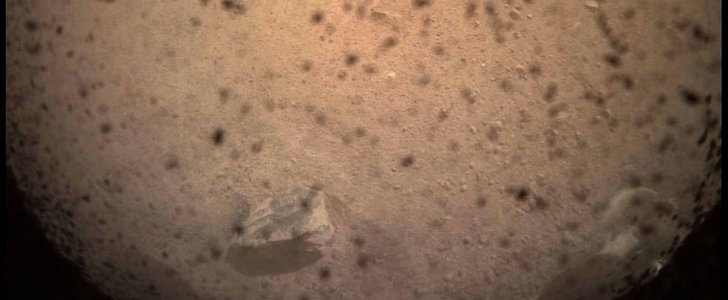Flawless. This is the word used countless times by engineers at NASA's Jet Propulsion Laboratory in Pasadena, California to describe the successful conclusion the InSIght mission.
Broadcasted live all over the world, the landing has captured the attention of millions, especially because this is the first such achievement in six years.
Time after time, info from the InSIght and the MarCO satellites that have accompanied the spacecraft showed that all systems are nominal and the lander is ready to start its two-year mission and learn more about the secrets of Mars.
InSIght had to do pretty much all the countless precision steps to get down on the surface on its own, without any control from Earth. The operation became NASA’s eight successful soft landing on the neighboring planet.
As soon as it landed, the InSIght started deploying its solar panels, an operation that too went without a hitch.
"We are solar powered, so getting the arrays out and operating is a big deal," said in a statement InSight project manager Tom Hoffman.
"With the arrays providing the energy we need to start the cool science operations, we are well on our way to thoroughly investigate what's inside of Mars for the very first time."
From now on, it’s all business for InSIght, as it will begin to survey the Elysium Planitia region of Mars like no other machine ever sent there.
It will look for quakes, perturbations of Mars' rotation axis, information about the planet's core or the amount of heat escaping from underneath.
It will be the first time humans have tried to look beneath the surface on Mars. InSight will be doing this with the help of the SEIS instrument (Seismic Experiment for Interior Structure), a tool equipped with six sensors to measure the ground motions over a wide range of frequencies.
RISE (Rotation and Interior Structure Experiment), will assess perturbations of Mars' rotation axis, and HP3, or Heat Flow and Physical Properties Package, will dig 10 to 16 feet (3 to 5 meters) holes into the Martian surface and place sensors to determine the amount of heat escaping from the planet's interior.
Time after time, info from the InSIght and the MarCO satellites that have accompanied the spacecraft showed that all systems are nominal and the lander is ready to start its two-year mission and learn more about the secrets of Mars.
InSIght had to do pretty much all the countless precision steps to get down on the surface on its own, without any control from Earth. The operation became NASA’s eight successful soft landing on the neighboring planet.
As soon as it landed, the InSIght started deploying its solar panels, an operation that too went without a hitch.
"We are solar powered, so getting the arrays out and operating is a big deal," said in a statement InSight project manager Tom Hoffman.
"With the arrays providing the energy we need to start the cool science operations, we are well on our way to thoroughly investigate what's inside of Mars for the very first time."
From now on, it’s all business for InSIght, as it will begin to survey the Elysium Planitia region of Mars like no other machine ever sent there.
It will look for quakes, perturbations of Mars' rotation axis, information about the planet's core or the amount of heat escaping from underneath.
It will be the first time humans have tried to look beneath the surface on Mars. InSight will be doing this with the help of the SEIS instrument (Seismic Experiment for Interior Structure), a tool equipped with six sensors to measure the ground motions over a wide range of frequencies.
RISE (Rotation and Interior Structure Experiment), will assess perturbations of Mars' rotation axis, and HP3, or Heat Flow and Physical Properties Package, will dig 10 to 16 feet (3 to 5 meters) holes into the Martian surface and place sensors to determine the amount of heat escaping from the planet's interior.

